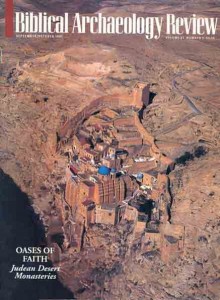History and Technology of Olive Oil in the Holy Land
Rafael Frankel, Shmuel Avitsur and Etan Ayalon (Arlington, VA: Olearius Editions, 1994), 208 pp., $40.
For thousands of years, the production of olive oil has been essential to life in the Holy Land. Olive oil was a basic food, a fuel for lamps, a raw material for making soap and a holy offering in religious ceremonies. Three Israeli scholars here trace the history of the many procedures that have been used to produce this precious oil. Lavish black-and-white illustrations and photographs add to the appeal of the book, as do the extensive endnotes, glossary and bibliography. The text is an unusual mix of technical information and readable prose.
The World of Roman Costume
eds. Judith Lynn Sebesta and Larissa Bonfante (Madison, WI: Univ. of Wisconsin Press, 1995), 292 pp., $47.50.
Based on the premise that habits of dress were determined by, and are extensions of, the traditional roles and everyday activities of the Romans, these essays provide a valuable resource for historians of culture, the arts and religion. The editors draw on the expertise of archaeologists, philologists, anthropologists and historians in this interdisciplinary study of everything from hairstyles, jewelry and accessories to literature and geography. The book is generously illustrated in black and white.
Fortifications and the Synagogue: The Fortress of Babylon and the Ben Ezra Synagogue, Cairo
Already a library member? Log in here.
Institution user? Log in with your IP address.

